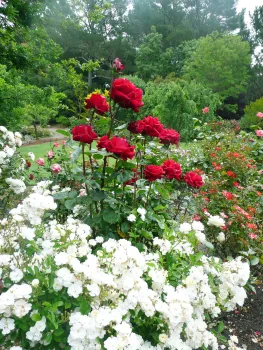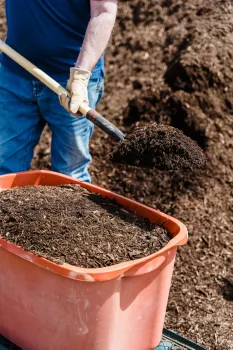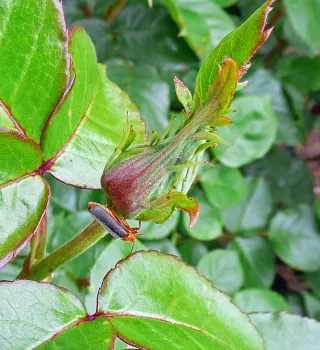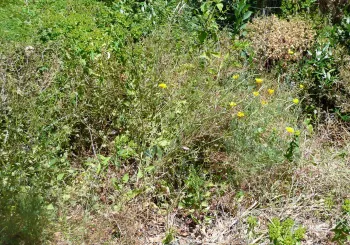
With their timeless beauty and grace, roses are often considered jewels of the garden. They also have the reputation for being persnickety plants that are high-maintenance and heavily dependent on chemical fertilizers and pesticides. Today’s gardeners are looking for easier and gentler ways of growing America’s national flower, and ask, can you have gorgeous rose blooms on plants that are bountiful and healthy AND be kind to the environment at the same time? The answer is a resounding YES! Grow your roses and all your other garden plants the Earth-friendly way. Using sustainable processes that mimic Nature, you can create a great-looking garden that’s healthier for you, your family, your pets, and the environment!
The key elements for this kinder approach to growing roses are to choose the right varieties for your location, build and maintain healthy soil, water wisely, promote biodiversity, and use integrated pest management.
Choose the right varieties for your location – When shopping for roses, look for varieties that are well-suited to your garden’s microclimate and have proven to resist disease. The Marin Rose Society website has a list of roses that do well in our environment. Plant in a place that gets a minimum of six hours of sun each day, is protected from wind, and has adequate space to spread out.

Build and maintain healthy soil - Like all plants, roses thrive when grown in healthy, living soil, rather than relying on chemical fertilizers that can harm soil life and pollute waterways. Feed the soil with compost, aged manure, or organic mulch. These materials provide a slow and steady supply of plant nutrients that improve soil structure, promote movement of air and water, and are a good home for plant roots and soil organisms.
Water wisely - Deep, infrequent watering that encourages the development of strong root systems is key to effective watering. Drip irrigation or soaker hoses are ideal, delivering water directly to the soil without wetting the foliage. Water early in the morning to reduce evaporation and allow leaves to dry if they do get wet, reducing the chance of disease.
Promote biodiversity - A wide variety of flowering plants, including natives, perennials, annuals, and herbs, supports diversity of soil microorganisms, and provides nectar and habitat year-round for beneficial insects like ladybugs, lacewings, and parasitic wasps that prey on common rose pests. Let parts of your garden grow a little wild, with areas of undisturbed ground, leaf litter, or flowering weeds like dandelions that can support a variety of life forms.

Use integrated pest management – Whether it’s aphids or spittle bugs, earwigs, or cucumber beetles, you likely don’t want these pests on your roses or other garden plants. Using integrated pest management (IPM), a holistic, ecologically based approach, you can prevent pests entirely or reduce them to levels you can live with.
In a healthy ecosystem, natural enemies keep pest populations in check (think ladybugs munching on aphids). Predators, parasites, and pathogens (disease-producing organisms) are the primary groups of natural enemies (also called biological control agents). These include many species of birds, mammals, amphibians, and reptiles, as well as predatory insects and spiders, and pathogens specific to pests, such as Bt (Bacillus thuringiensis) for many caterpillars.

Take Nature’s approach and invite these helpful pest controlling creatures into the garden by providing them with food (seeds, berries, nuts, fruits, nectar, pollen, and foliage), water for drinking and bathing (anything from a cement birdbath to a depression in a stone), protection from predators and weather (dense shrubs, evergreens, rock piles, and wooded areas), and places for raising their young (mature or dead trees, dense shrubs, burrows, or even home-made nesting boxes). And do so while being gentle with your garden-nurturing your soil, using organic materials, and avoiding chemicals from synthetic fertilizers and pesticides that may harm wildlife.
It’s actually pretty easy to enjoy your beautiful roses grown the Earth-friendly way!
By Nanette Londeree, August 2, 2025

